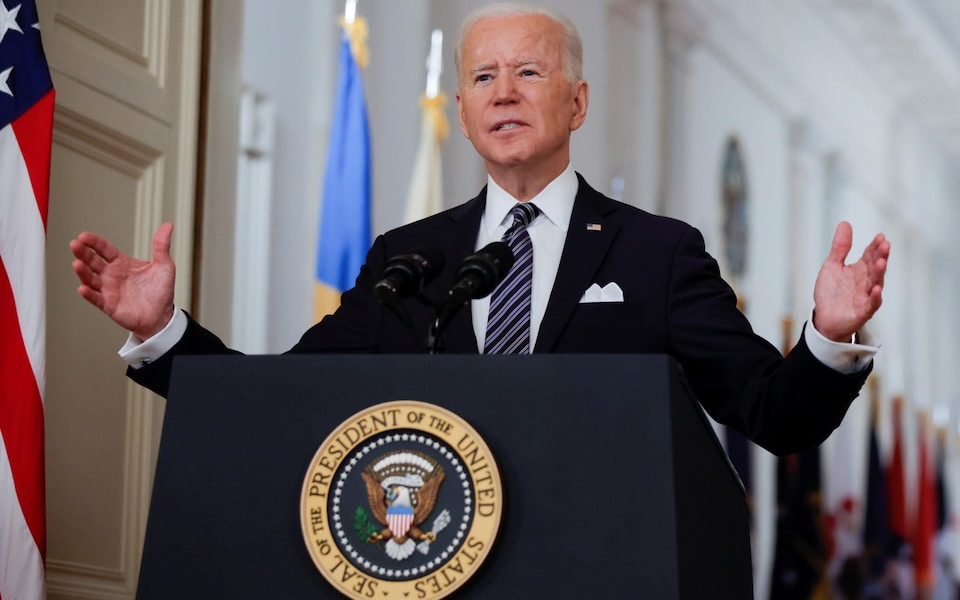- Details of submarine and why it is exceptional
The Navy on Thursday fired the leaders of USS Connecticut, the submarine that struck an undersea mountain in the Indo-Pacific last month.
Commanding Officer Cmdr. Cameron Aljilani, Executive Officer Lt. Cmdr. Patrick Cashin and Chief of the Boat Master Chief Sonar Technician Cory Rodgers were all relieved “due to loss of confidence,” according to a U.S. 7th Fleet statement.
The Connecticut is one of three Seawolf-class submarines in the US Navy fleet, each costing about $3 billion to build. The 9,300-ton, 353-foot sub, commissioned in 1998 and is crewed by 140 sailors.
Like all modern US Navy attack submarines, the Connecticut is powered by a nuclear reactor, which enables it to be fast but quiet, with none of the noise produced by a combustion engine. Nuclear power enables such subs to stay at sea and underwater as long as provisions for the crew hold out.The Navy doesn’t give exact figures in publicizing the abilities of its submarine, but experts say the Seawolf-class is exceptional.”These subs have some of the most advanced — in fact the most advanced — underwater capabilities in the business,” said Alessio Patalano, professor of war and strategy at King’s College in London.The Navy says it is “exceptionally quiet, fast, well-armed, and equipped with advanced sensors.”A Navy fact sheet says the Connecticut is capable of going faster than 28 mph (46.3 kph) under water. That’s faster than the average container or cargo ship on the surface of the sea and almost as fast as the US Navy’s Arleigh Burke-class destroyers.As it is larger than even the newest Virginia-class attack subs, the Connecticut can carry more weaponry than other US attack submarines — including up to 50 torpedoes as well as Tomahawk cruise missiles, according to a US Navy fact sheet.
7th Fleet head Vice Admiral Karl Thomas “determined sound judgement, prudent decision-making and adherence to required procedures in navigation planning, watch team execution and risk management could have prevented the incident.”
The statement did not include further details on how the command failed to prevent the accident.
The Oct. 2 incident, during which the nuclear-powered fast attack submarine grounded on an uncharted seamount, injured 11 crew members.
The Navy hasn’t fully explained how the mistake happened or revealed the full damage to the vessel, which is currently in Guam for assessment.
It is unknown whether a command investigation into the incident, which was completed this week, will be made public.
Capt. John Witte will take over as the vessel’s interim commanding officer, while Cmdr. Joe Sammur will assume duties as interim executive officer and Command Master Chief Paul Walters will be interim chief of the boat.
Some submariners call the USS Connecticut the luxury sports car of submarines especially with its $3 billion piece of American military hardware that’s fast and outfitted with the latest electronic gadgetry only available when price is not a consideration.
But despite its high cost and sophisticated tech, the United States Navy says the Seawolf-class nuclear-powered attack sub ran smack into an undersea mountain in the Pacific on October 2.
The Connecticut is now pierside at a US Navy base on the Pacific island of Guam.
The Navy says it got there — more than 1,800 miles (2,900 kilometers) east of the South China Sea — under its own power and its nuclear reactor was not harmed, although 11 of its crew of suffered minor injuries in the collision.
The Pentagon has not released details of the damage the vessel incurred nor how long it might be out of action in a region which, with the rise of the Chinese navy, is seeing growing demands on the US fleet.
Which leaves US military planners with some big questions to answer in the coming weeks and months.
Not the least of which is, how did this happen?
The USS Connecticut isn’t the first US Navy sub to be involved in an underwater collision.
On January 8, 2005, the USS San Francisco, a Los Angeles-class attack submarine, struck a seamount about 350 miles (563 kilometers) south of Guam in the Pacific Ocean.
The incident killed one sailor and injured 97 others among the crew of 137.A Navy investigation concluded the San Francisco was traveling at maximum speed at a depth of 525 feet (160 meters) when it hit the seamount, which was not on the chart the sub’s commanders were using at the time.
But the probe found the commanders should have known the undersea mountain was there based on other charts in their possession, which indicated a navigational hazard in the area.
“If San Francisco’s leaders and watchteams had complied with requisite procedures and exercised prudent navigation practices, the grounding would most likely have been avoided,” the Navy report said. “Even if not wholly avoided, however, the grounding would not have been as severe and loss of life may be been prevented.”
Other incidents have been less serious but illustrate the difficulties of maneuvering subs even in familiar waters.
For instance, in November 2015, the USS Georgia, an Ohio-class guided missile submarine, struck a channel buoy and grounded as it was returning to port in Kings Bay, Georgia.
The 18,000-ton, 560-foot-long (170 meters) sub sustained more than $1 million in damage and its captain was relieved of command.
And in 2003, the USS Hartford ran aground while entering a NATO base in Spain, resulting in a $9 million repair bill and its commander being relieved of duty.Despite those incidents, Shugart, the former US Navy sub commander, defends the US Navy’s record under the sea.
“We have more submarines, they spend more time at sea, they go a lot farther away from home and they operate at higher speeds than probably anybody else’s,” he said.
“We do the most challenging submarine missions that anybody does and the farthest away from home,” he said, adding: “even the pros have bad days.”





